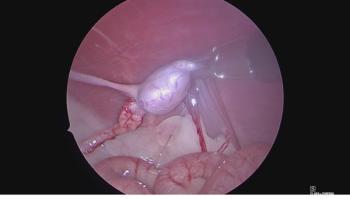
Controversies in diagnosing IMHA (Proceedings)
Immune-mediated hemolytic anemia (IMHA) is a common hematological disorder in dogs, may be primary (idiopathic, autoimmune) or occur secondarily to underlying diseases (e.g. infections) and is often associated with life-threatening complications.
Immune-mediated hemolytic anemia (IMHA) is a common hematological disorder in dogs, may be primary (idiopathic, autoimmune) or occur secondarily to underlying diseases (e.g. infections) and is often associated with life-threatening complications. The approach to the diagnosis of IMHA is being discussed including autoagglutination, spherocytosis, and Coombs' test. Moreover, its management with immunosuppression and transfusion support will be discussed highlighting the limited evidence and surrounding controversies in a subsequent presentation.
Immune-mediated hemolytic anemia (IMHA) arises when an immune response targets directly or indirectly erythrocytes and hemolytic anemia ensues. Until the antierythrocytic antibodies are identified and the pathogenesis is better understood, the nomenclature and classification of IMHA remains imprecise and somewhat confusing in human and veterinary medicine. In primary IMHA no inciting cause can be identified, hence the term idiopathic IMHA or autoimmune hemolytic anemia (AIHA). In contrast, secondary IMHA is associated with an underlying condition or triggered by an identifiable agent. Furthermore, alloimmune hemolytic anemias, such as hemolytic transfusion reactions, both acute and delayed, and neonatal isoerythrolysis (cats), are caused by specific anti-erythrocytic alloantibodies.
In dogs idiopathic IMHA (AIHA) has been considered the most common cause of hemolytic anemias for decades, and many anemic dogs are presumptively managed for AIHA. Although numerous retrospective studies and review articles have been published and characterize the clinical features, laboratory test results, therapeutic interventions, and complications of AIHA in dogs, much remains anecdotal or is extrapolated from human and experimental medicine. This presentation will discuss some of the challenges and controversies in the diagnosis of IMHA in dogs. Because of a paucity of evidence on canine IMHA, some food-for-thought rather than a definitive approach for IMHA will be provided. Questions that will be addressed include the following:
Is it a Primary or Secondary IMHA?
Historically, in most dogs with IMHA, an underlying condition was never identified and, thus, assumed to be primary or idiopathic IMHA. However, thanks to our improved diagnostics and awareness an underlying disease or trigger could be identified or suspected. Many dogs suspected to have idiopathic IMHA present with an acute history of vomiting, diarrhea, lethargy, or anorexia indicating a recent trigger rather than reflecting signs of hemolytic anemia.
The various breed and family predilections (about ? of all cases of IMHA are seen in American Cocker Spaniels) suggest strongly the involvement of genetic factors leading to a predisposition to IMHA. There is ample evidence for infectious agents to be associated with IMHA, causing parasitic (babesiosis, leishmaniasis, ehrlichiosis, anaplasmosis and dirofilariasis), fungal, and bacterial diseases (leptospirosis, chronic abscesses, discospondylitis, pyometra, colitis, and pyelonephritis). The relationship between infection and autoimmunity may be explained by molecular mimicry. Furthermore, in limited surveys a seasonality (summer) and a temporal association between vaccination and onset of IMHA have been suggested, but since no specific vaccine has been implicated, it appears likely that vaccines enhance a smoldering immune process. Many dogs with IMHA have severe leukocytosis (with or without left shift) and also considerable serum liver enzyme elevations (prior to prednisone) suggestive of serious inflammatory processes, which may enhance the immune destruction by activating the macrophage system and the thrombotic tendency. Also at necropsy there is considerable evidence of inflammation and necrosis in most cases of IMHA. Beside the genetic factors and the infectious/inflammatory triggers, several drugs and toxins (e.g. sulfonamides, bee sting) and neoplastic disease processes have been associated with IMHA. Thus, an extensive search for an underlying disorder or trigger is always warranted.
What is the Clinical Evidence for Erythrocyte Immune Destruction?
Regardless of the underlying cause, IMHA results from a breakdown in immune self-tolerance or from a deficit in the control mechanism that regulates B and T lymphocyte activity as well as macrophage reactivity. Immune destruction of erythrocytes is initiated by the binding of IgG or IgM antibodies to the surface of erythrocytes. Under most clinical circumstances, immune destruction is an extravascular process that depends on recognition of erythrocytes opsonized with IgG, IgM and/or complement by specific receptors on reticuloendothelial cells. Macrophages with engulfed erythrocytes may be noted on cytological examination of blood and tissue aspirates as erythrophagocytosis, but this is not definitive proof of an immune-mediated process. Antibody-coated erythrocytes may also be lysed by complement fixation and the membrane attack complex, which is clinically noted as intravascular hemolysis.
A diagnosis of IMHA must demonstrate accelerated immune destruction of erythrocytes. Evidence of a hemolytic anemia is suggested clinically by icterus and a regenerative anemia with hyperbilirubinuria, and hemoglobinemia and hemoglobinuria refers to an intravascular process. However, the erythroid response in the bone marrow may be blunted by the immune process or the underlying disease thereby leading to non-regenerative anemias. Besides documenting a hemolytic anemia, one or more of the following three hallmarks must be present to support a diagnosis of immune-mediated hemolysis.
Autoagglutination
Anti-erythrocytic IgM and in large quantities IgG antibodies may cause direct erythrocyte autoagglutination. Autoagglutination may be seen by naked eye in EDTA tube or on a glass slide or may become apparent as small lumps of erythrocytes on blood smears. For yet unexplained reasons, canine erythrocytes have a tendency to unspecifically agglutinate in the presence of plasma and colder temperatures as well as possibly EDTA anticoagulant. Mixing blood with one drop of saline may break up rouleaux formation but not other forms of unspecific red cell agglutinations. It is, therefore, important to determine whether the agglutination persists after “saline washing”, which has been coined true autoagglutination. This is accomplished by adding three times physiologic saline to the tube containing the blood after repeated mixing, centrifugation and removal of the supernatant including the plasma. True autoagglutination is indicative of an immune process, but precludes the performance of Coombs' test or blood typing/crossmatching. If the agglutination breaks up after washing, the Coombs' test is expected to be positive, if it is a case of IMHA.
Spherocytosis
If erythrocytes are only partially phagocytized or lysed by complement, erythrocytes with reduced surface area to volume ratio, known as spherocytes, are formed. They appear spherical and microcytic with no central pallor and are extremely fragile. Large numbers of spherocytes are nearly diagnostic for IMHA, whereas small numbers may be seen with other conditions including DIC, endotoxemia and zinc intoxication.
Positive direct Coombs' test result
The direct Coombs' test is also known as direct antiglobulin test and is used to detect antibodies and complement on the surface of erythrocytes when the anti-erythrocyte antibody strength or concentration is too low to cause spontaneous agglutination (subagglutinating titer). Separate canine-specific IgG, IgM, and C3b antibodies as well as polyvalent Coombs' reagents are available. They are added at various concentrations after washing the patient's erythrocyte free of plasma and mixtures are generally incubated at 37°C (cold agglutinins appear to be rarely of clinical importance and rarely cause hemolysis). The strength of the Coombs' reaction does not necessarily predict the severity of hemolysis but changes are useful in monitoring the disease. A standardized, sensitive, and simple gel column method had been introduced by DiaMed but unfortunately the company was sold to BioRad which decided to not pursue the veterinary products. Additional standardized test methods are being developed. Although many commercial laboratories offer this Coombs' test for dogs, clinicians have questioned the tests sensitivity. Even so, dogs with negative Coombs' test results should be reevaluated for other causes of hemolytic anemia. Negative results may be seen because of technical reasons, insufficient quantities of bound antibodies, the presence of weakly bound antibodies, or the disease in remission. A few days of immunosuppressive therapy will likely not reverse the Coombs' test results, as unlikely a transfusion would cause a positive Coombs' test result.
Some dogs with IMHA show poor bone marrow regeneration (no or low reticulocyte counts), which is considered to be caused by immune-targeting of precursor cells (no direct evidence) or direct marrow damage. It is not uncommon to also observe thrombocytopenia in a dog with IMHA. This may be due to an underlying disease such as babesiosis (secondary IMHA), another immune process (Evans' syndrome) or a thrombotic tendency. Some dogs with IMHA also have a positive serum ANA titer, polyarthropathy with a positive RF or immune-mediated hypothyroidism. Thus, it is advisable to assess any IMHA dog thoroughly for other immune diseases, thrombotic tendencies as well as underlying disorders or triggers.
In conclusion, a diagnosis of IMHA requires the documentation of red blood cell destruction and an immune process. While regenerative anemia, icterus, and hyperbilirubinuria are suggesting a hemolytic anemia, evidence of true autoagglutination, spherocytosis, and/or a positive direct Coombs' test are required to document immune destruction.
Specific references are available from author upon request. Also see Giger U: Blood Loss and Hemolytic Anemias, in Textbook of Veterinary Internal Medicine, Eds. Ettinger S.J. and Feldman E.C., Philadelphia, PA, Saunders, 2005.
Contact: Dr. Urs Giger, School of Veterinary Medicine, University of Pennsylvania, 3900 Delancey Street, Philadelphia, Pennsylvania, USA. giger@vet.upenn.edu; http://research.vet.upenn.edu/penngen
Newsletter
From exam room tips to practice management insights, get trusted veterinary news delivered straight to your inbox—subscribe to dvm360.




